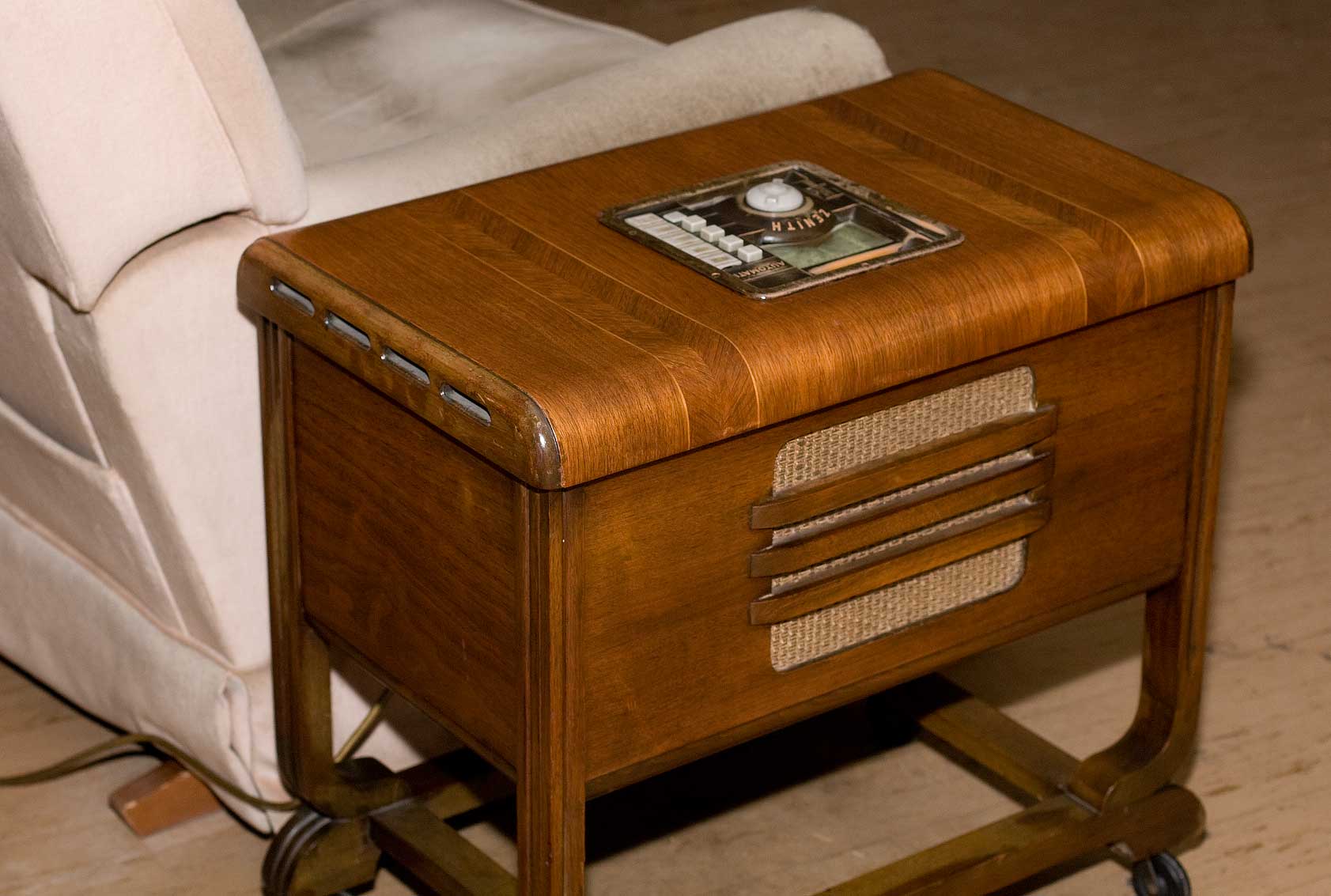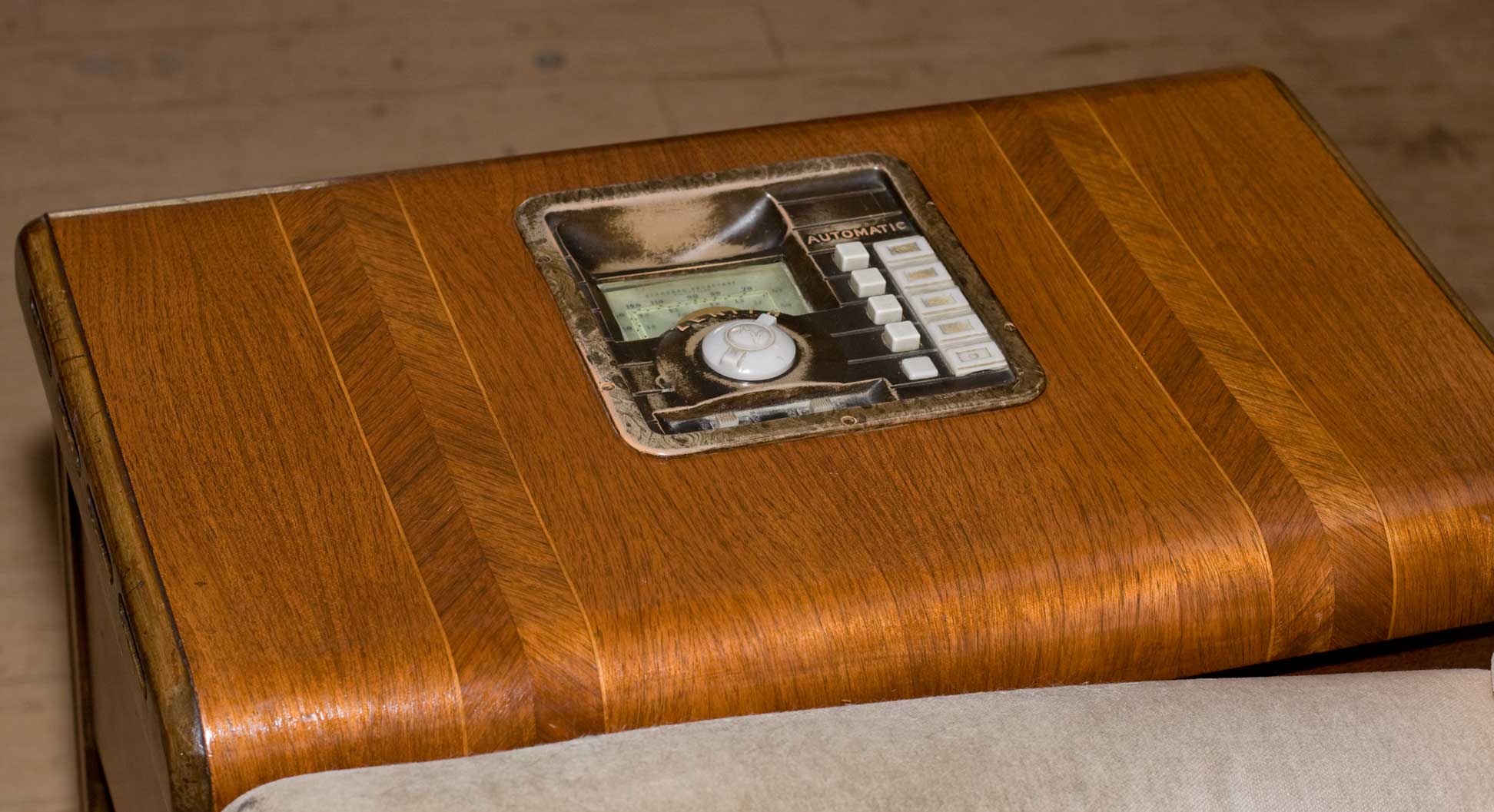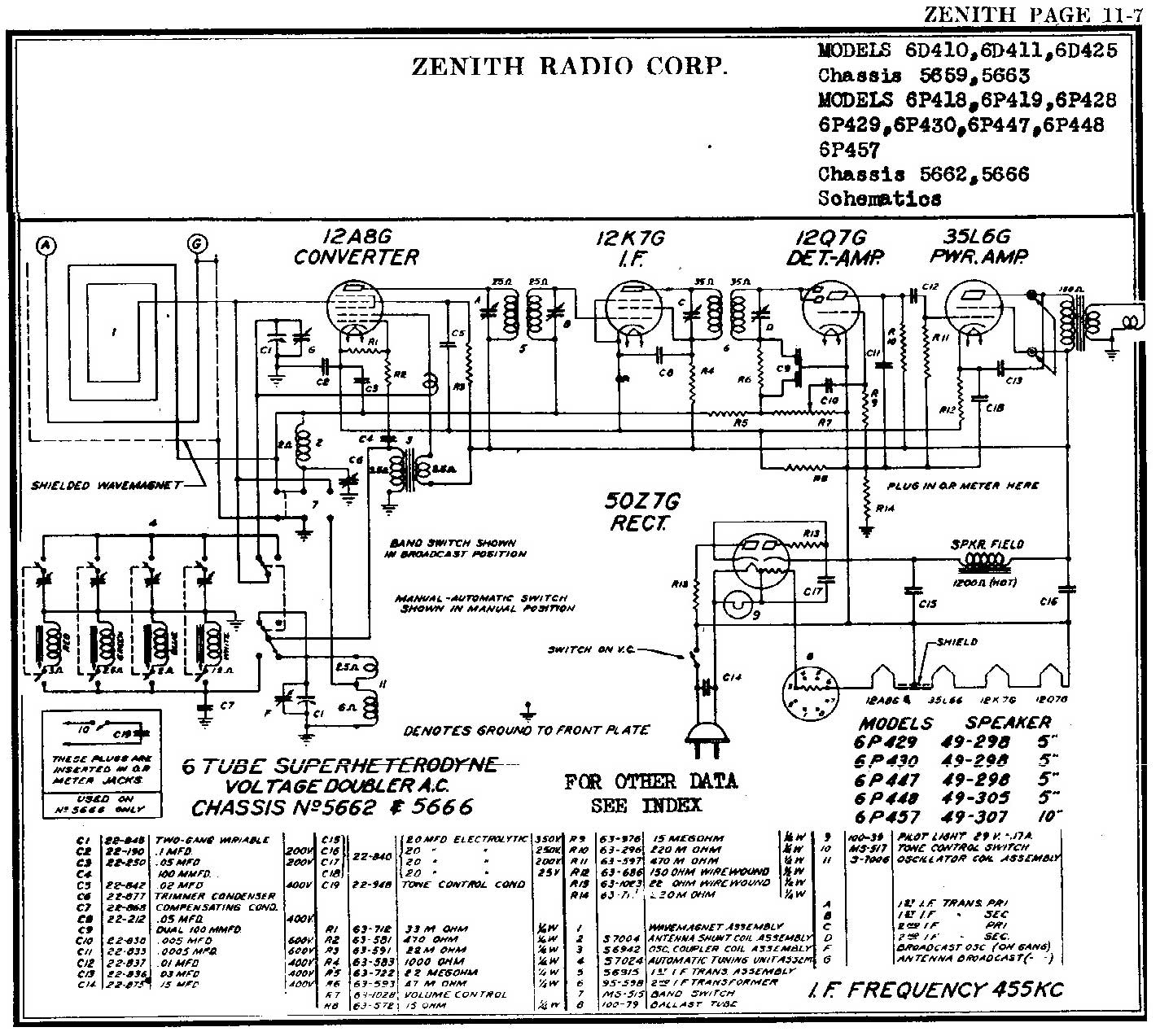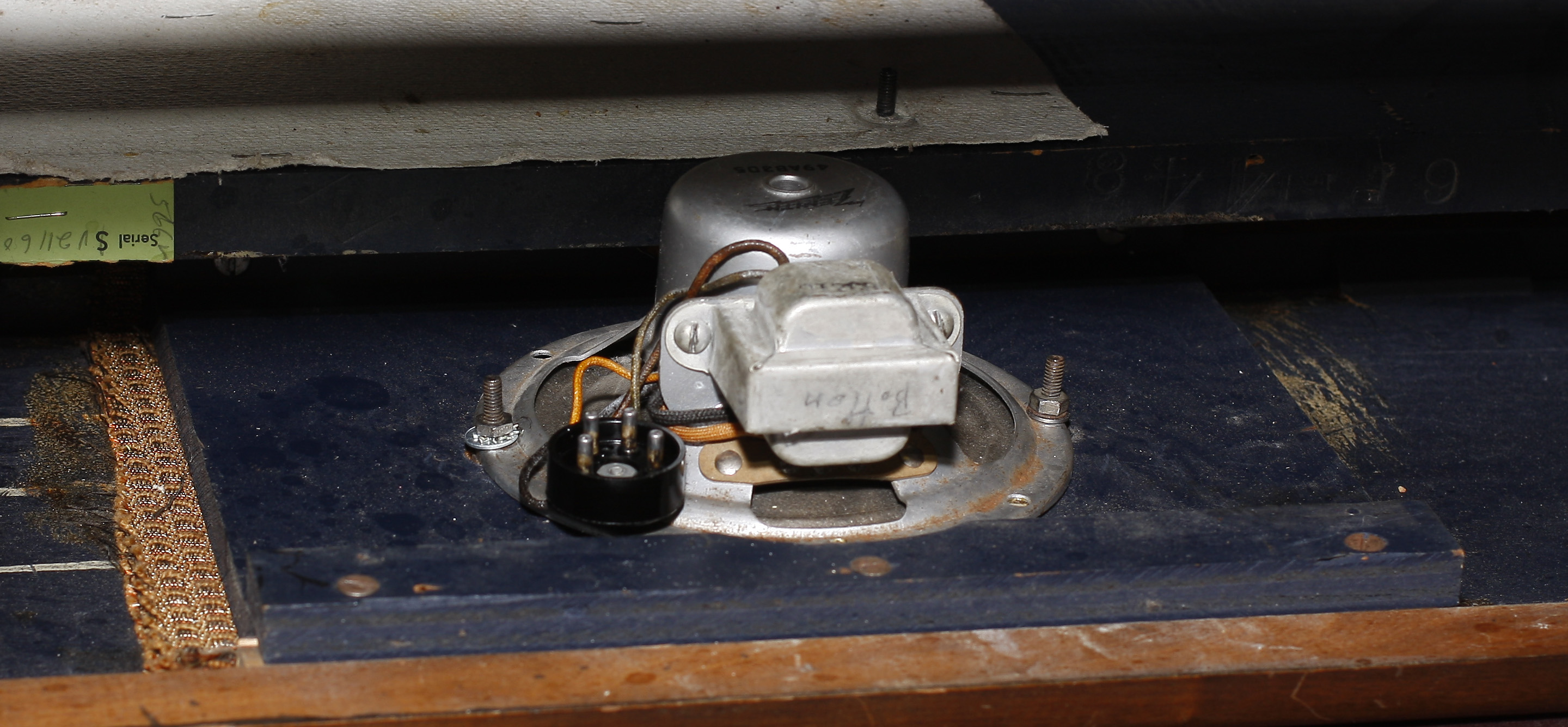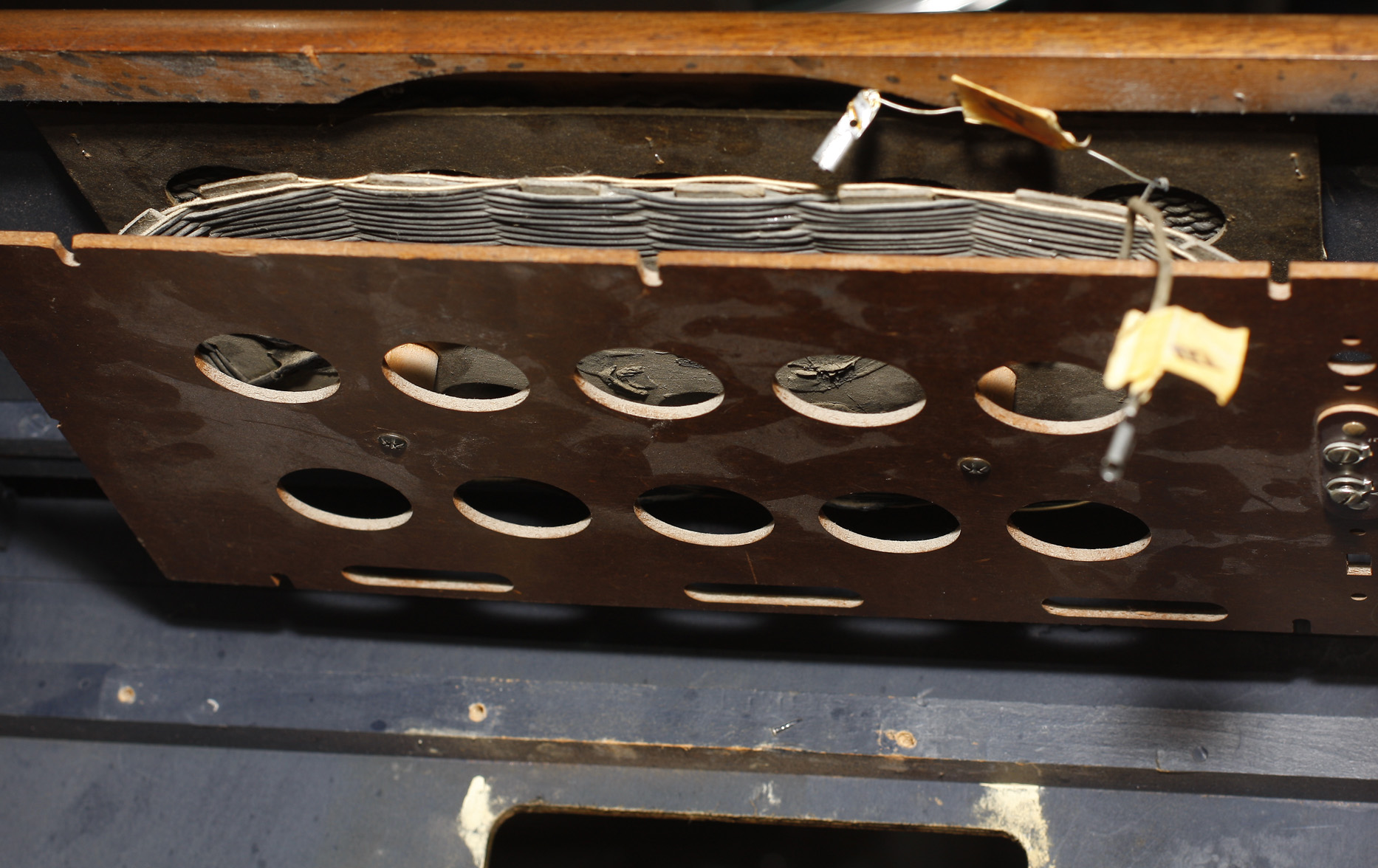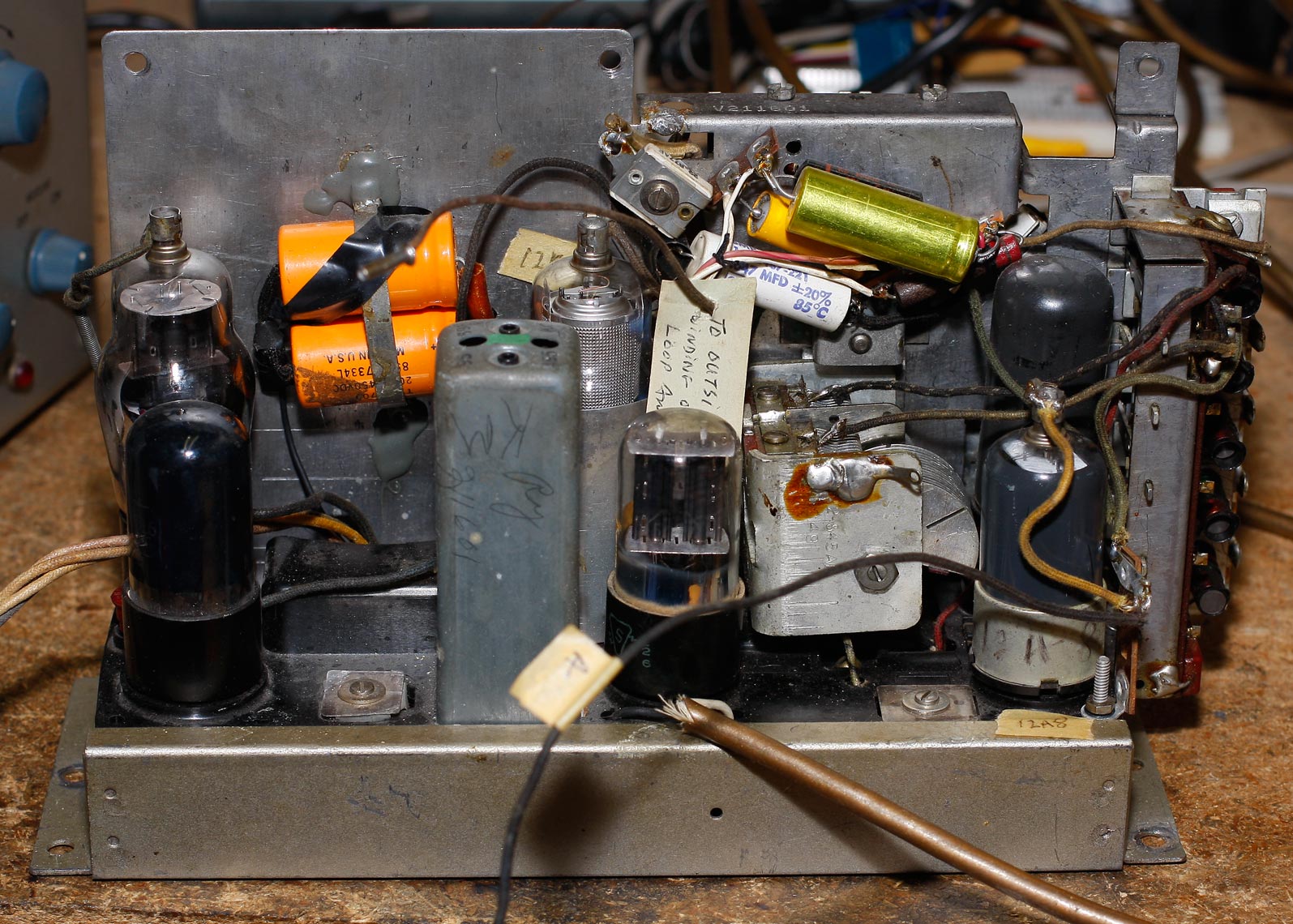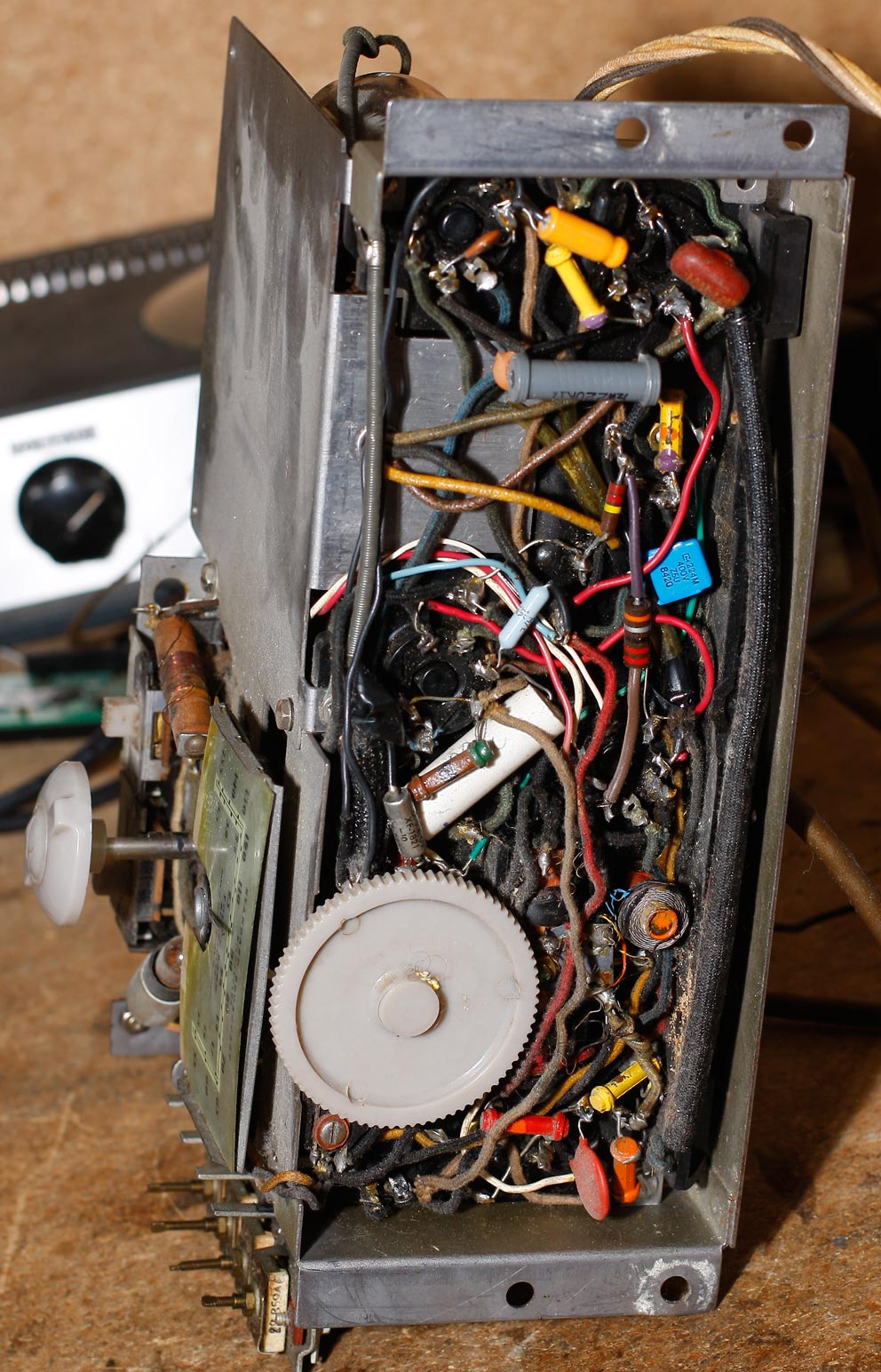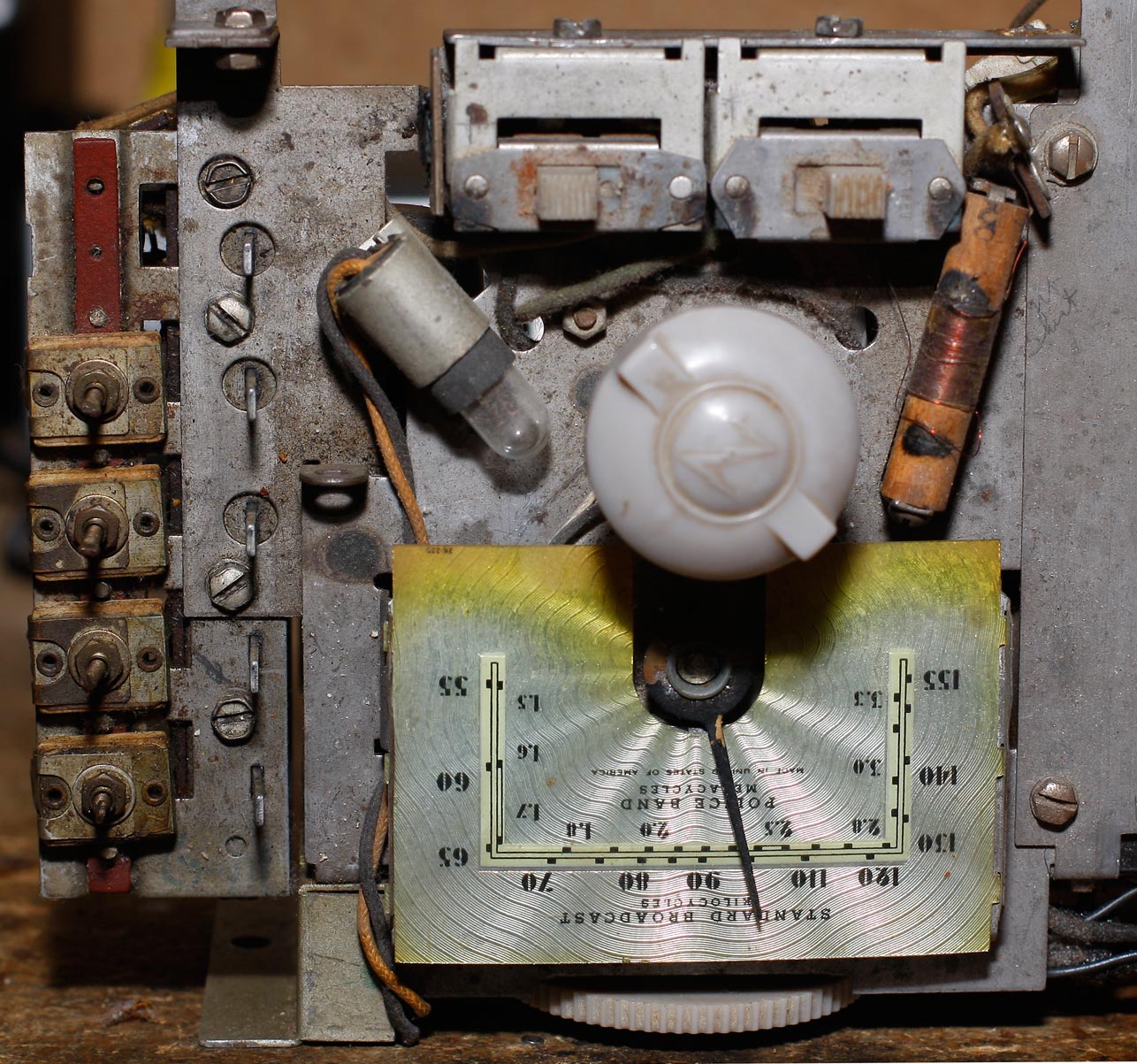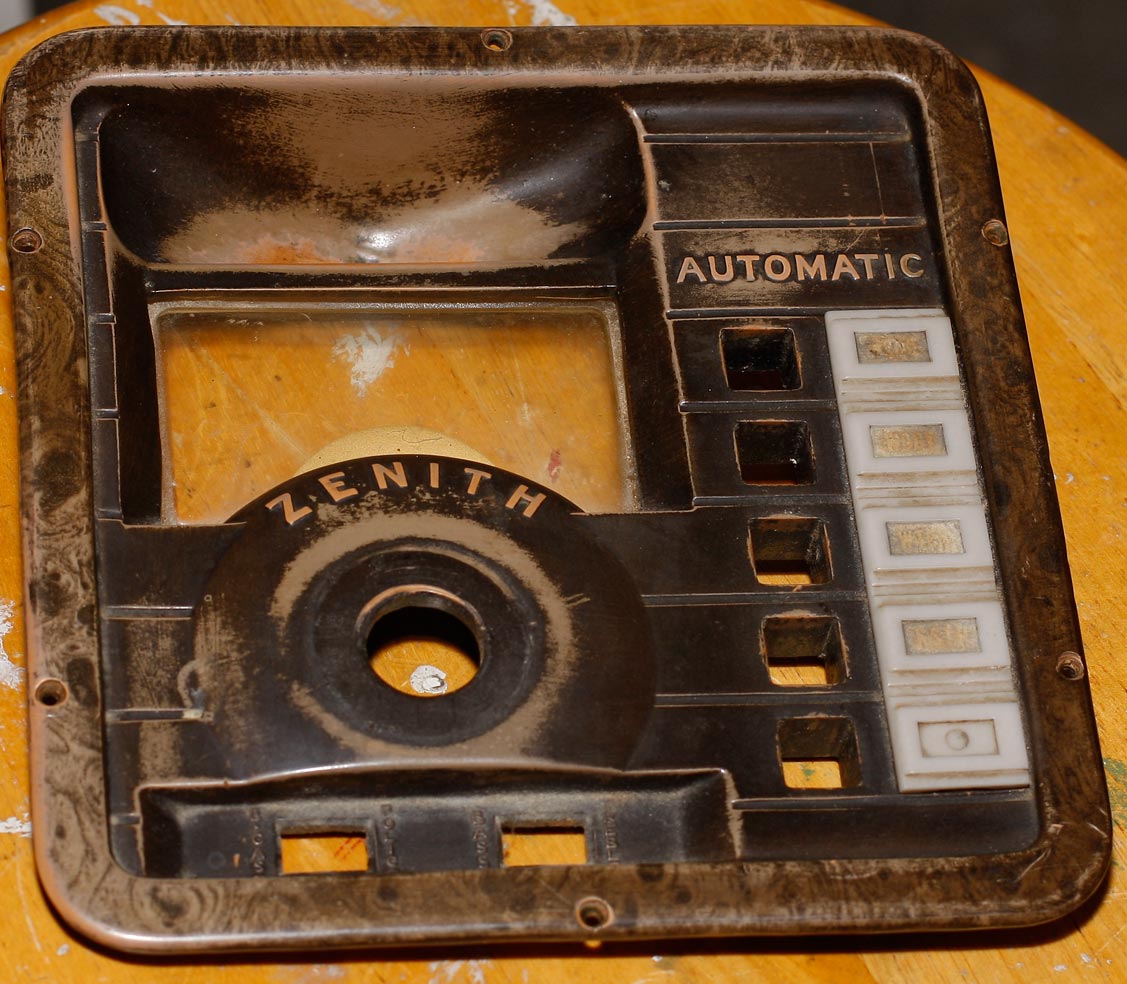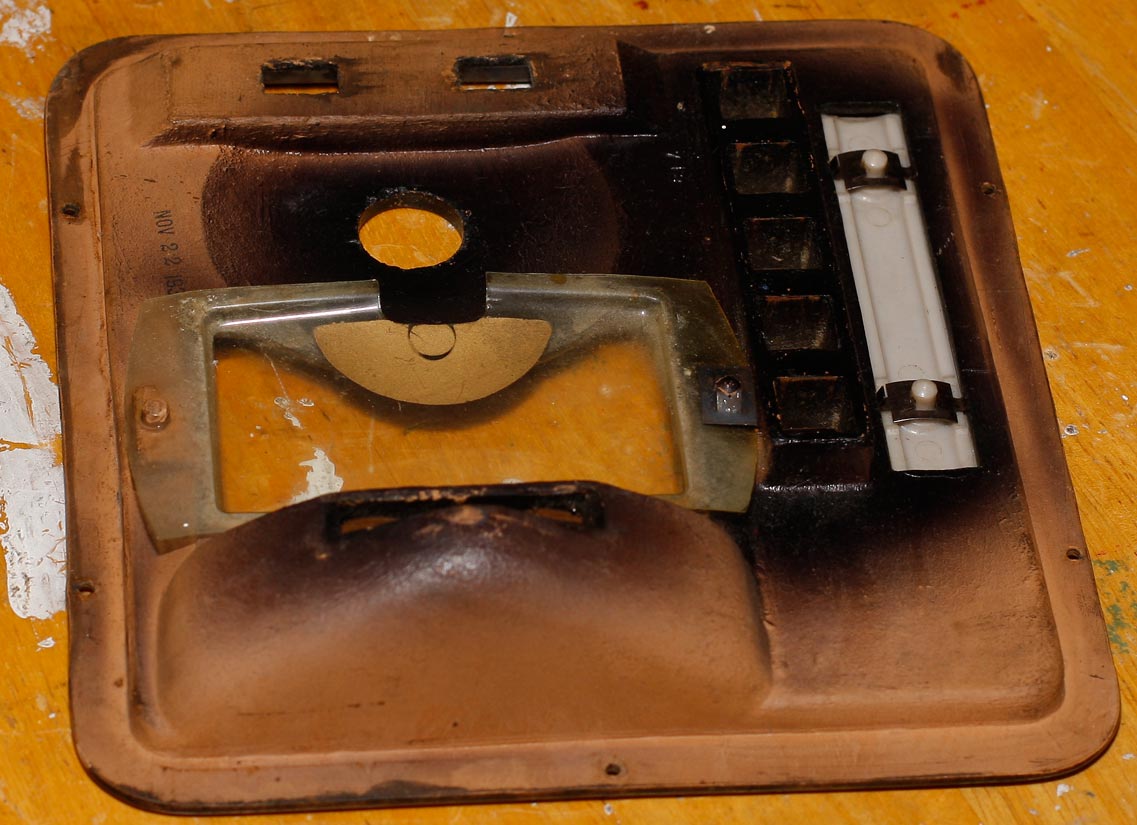
I always thought it would be slick to have a chairside radio. A number of manufacturers made them; Zenith made many. A chairside is exactly what it sounds like: about the size of an end table, they sit next to a chair so the owner can just reach over and run the radio—very convenient from the days before practical remote controls.
This particular one is a Zenith 6P448 "Radio Cart" from 1940. It's about the dimensions of a typical end table but maybe half the width. It's got casters, which I thought were particular to it but according to the book, Zenith Radio: The Glory Years, all the Zenith chairsides had casters that year.
It sold for $50 new in 1940. I paid about $80 76 years later. I was very lucky: the facia plate and controls are well worn, but the wood, which it's scratched and gouged here and there, is in very good condition. I initially tried it in the garage and it worked, but reception was poor. Inside the house it does better, but I think an alignment would probably improve it. I'll add photos of the chassis when I pull it.
As usual, you can click on the photos to get larger images.
So here's how it works. There's a big edge-wheel at the top, that's not visible in the angle of the control plate in the photo above (I'll take a straight-on photo later) that serves as the Power and volume. Below it there's the arc dial with two ranges: the lower one goes from the bottom of AM commercial broadcast (55 KHz) up to around 1550 KHz; the upper range picks up at 1550 on up to about 3.3 MHz, which was once Police band but is now a variety of things, including the 160-meter ham band. Would have been nice if it went up to 4 MHz to pick up the 80-meter band, where some full-AM contacts still occur. When I align it, I may try to see if I can extend it up there.
Below the dial is the big tuning knob. Below that are two slide switches: the one on the left is the range, the one on the right is tone, and boosts bass. Mine's already plenty bassy as it is, but it's possible that with some new capacitors on the audio to pick up the highs, the bass boost might be worth something. I believe it's meant to give some depth at low audio volume, much like "loudness" controls do on modern stereos.
The vertical stack on the right are radio buttons, used for hitting presets just like in the car. Presets were popular in car radios and they began showing up on larger household radios in the late 1930s, but it never really caught on.
I was hoping it had an eye tube, but no such luck.
Here's the schematic, from Rider's Perpetual Troubleshooter Manual Volume XI (it's also in Beitman's MON for 1939, p.188). Zenith used the same chassis in five different cabinets: three table-tops, my chairside, and one floor-model with a 10" speaker. They all share the same facia plate as my chairside. You can see one on Radiomuseum, or Google-image-search some of the other model numbers. They got their money's worth out of it.
So you can see it's an early version of what would become an All-American 5: five tubes and no transformer. In this case, a 12A8G, a 12K7G, a 12Q7G, a 35L6G and a 50Z7G rectifier. Would have been nice to have an RF amp on the front-end for that would have cost money.
Damn
This is the sort of thing that just drives me crazy. I brought it home, fired it up in my garage, and was surprised to find that it played and without A/C hum. It only picked up a couple of local flamethrow stations, but it least it played. So I rolled it into my house, put it next to my favorite chair, and started it up again. This time I got all kinds of stuff, but the selectivity was atrocious. I could get a dozen stations but all of them at the same time.
I figured maybe I could touch up the alignment. Should have left it alone.
Disassembled it, which turned out to be easier than I thought because the speaker is connected by a socket, and the Wavemagnet antenna by two inline pin & socket wire connections. Those both came out easily.
Things began to go South when it was time to take the chassis out. There are only two screws and it should slip out easily—except that it was held captive by the tuning knob. That was a press-fit, but it was still anchored on as if it had been arc welded. I probably could have used a tool like the ones automotive people used to pull window rollers—looks like a spatula with a slot in it. You slide it under the knob and then rock/pull it up. That may have worked, but I was a) afraid I might break the face plate, which is made of thin sheet metal, and b) I didn't have the tool or anything like it anyway.
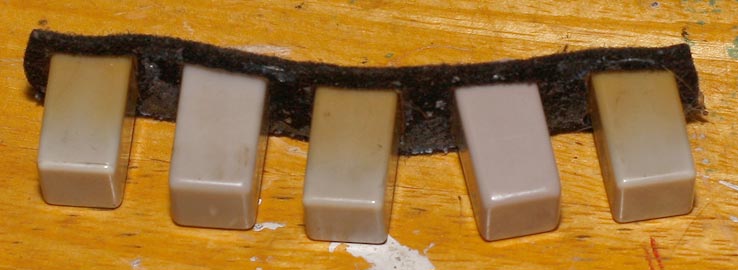 So instead I pulled the chassis from the back. Pull—pull—pull— POP! The knob went flying, and the push-buttons went flying as well. Everything was contained to a small area underneath my workbench, but I ended up one button short. I scoured the garage floor, the workbench, the trash can, underneath the car, everywhere. I never did find the button.
So instead I pulled the chassis from the back. Pull—pull—pull— POP! The knob went flying, and the push-buttons went flying as well. Everything was contained to a small area underneath my workbench, but I ended up one button short. I scoured the garage floor, the workbench, the trash can, underneath the car, everywhere. I never did find the button.
Luckily Renovated Radio turned out to have it (PBZ3 if you're looking). I couldn't tell the difference. It's second from the right on this photo, fairly-easily visibile only because my camera exaggerates the color staining on the others.
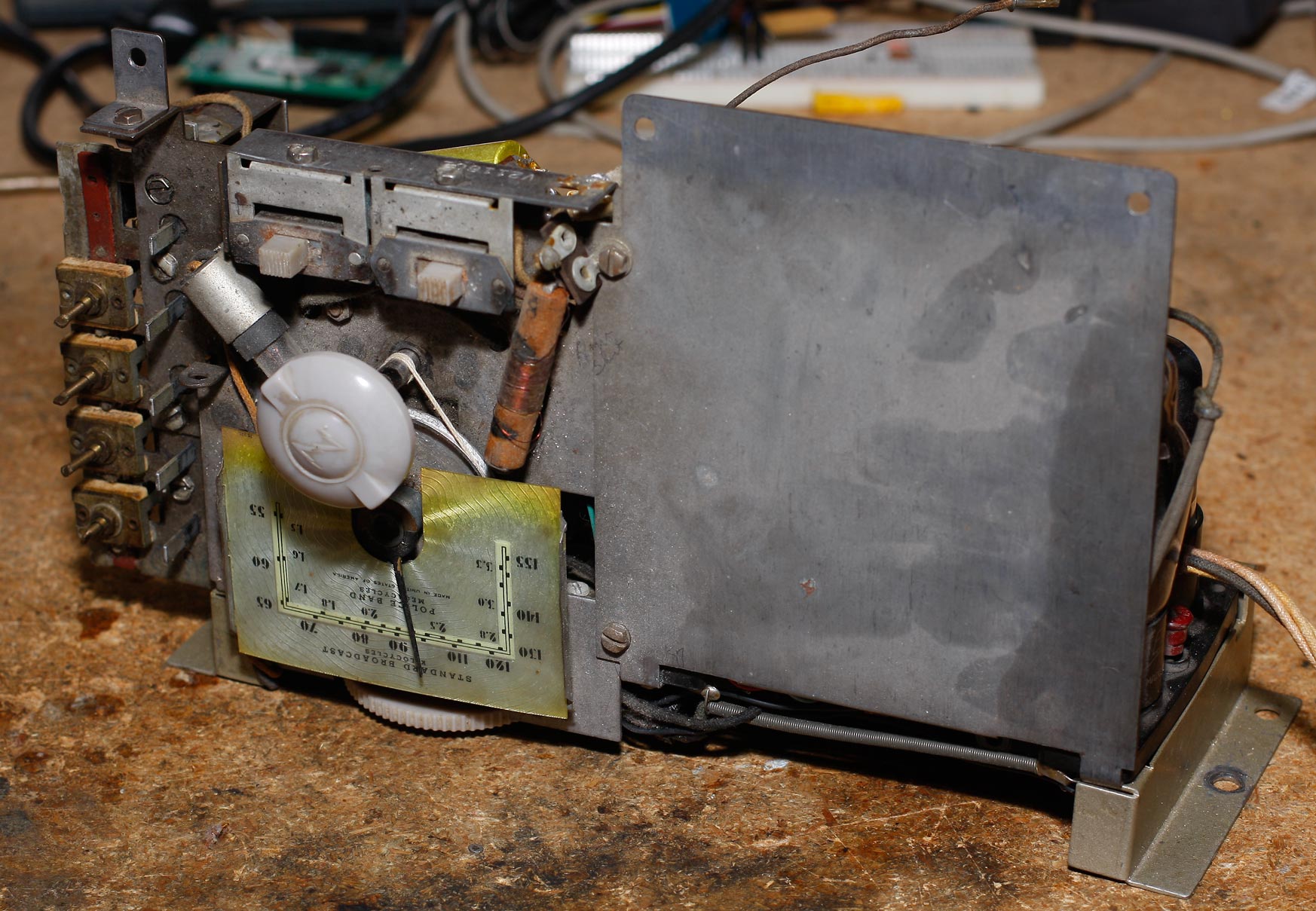 Things never got any better. I set the chassis on the bench, plugged in the antenna and the speaker, and never got another station no matter what I did. Tubes all check good. Audio's hot but somewhere the RF is laying down.
Things never got any better. I set the chassis on the bench, plugged in the antenna and the speaker, and never got another station no matter what I did. Tubes all check good. Audio's hot but somewhere the RF is laying down.
Thought I'd try injecting a signal with my Hickok generator, which turns out still to be shocking me, which means I have to replace the power-supply bypass caps as my next project. Got nothing. Decided to check to make sure the signal gen was even working and found that my HP frequency counter has died. Why? I have no idea. I ended up checking the signal by zero-beating against another radio with a digital readout.
I was able to find the signal but it was weak, weak, weak, and both of my generators put out a strong signal.
Long story short, I quickly ran out of ideas and got disgusted. Put it back together, which was another minor adventure in frustration, and now it sits next to my chair again, where it's a good place to keep a book and the TV remote off the floor.
I'll come back to this and try it again at a later date. But this is the sort of failure that really bothers me, because I have nothing to show for it. You're supposed to learn from your failures—I haven't learned anything from this one.
Oh yeah: six months later (at least), I was standing at the workbench, looked down by my feet and saw something in the middle of the floor. I picked it up and—it's the missing push-button.
Current status: works but poorly; needs to go back on the bench and reviewed.

